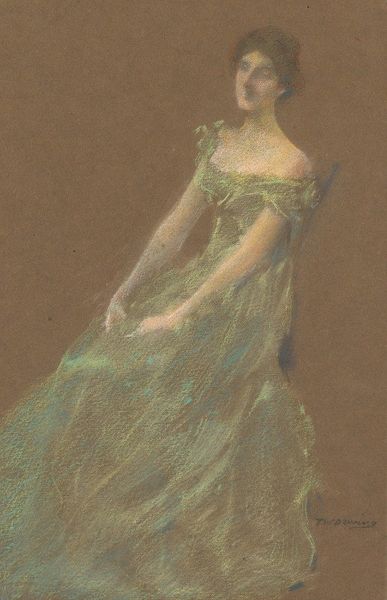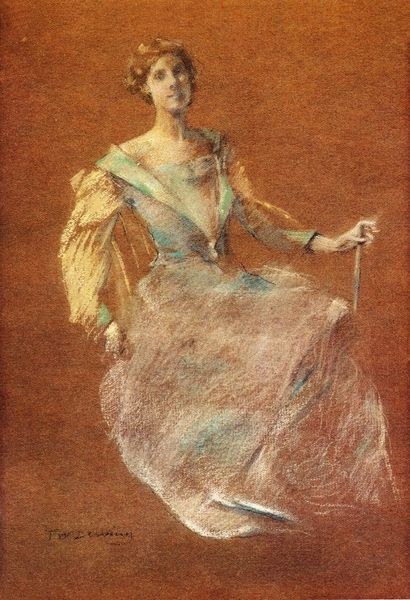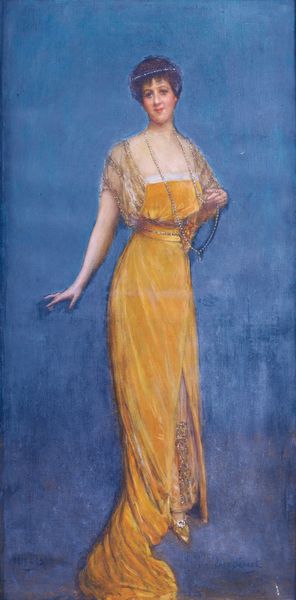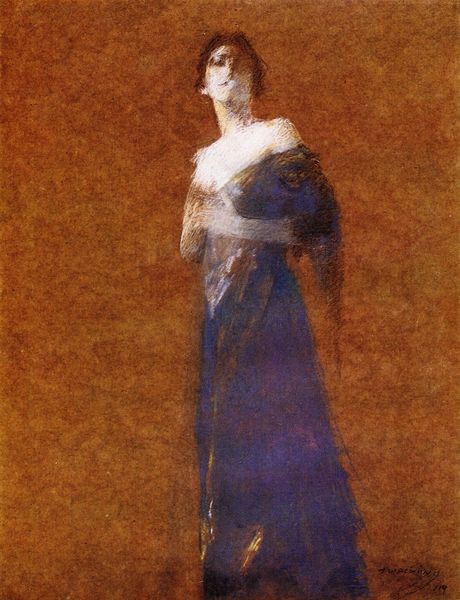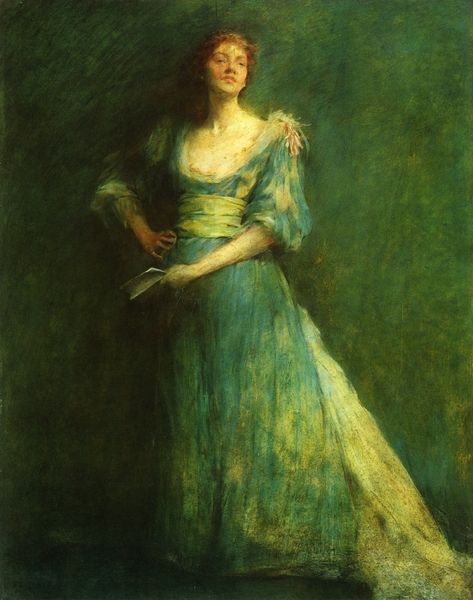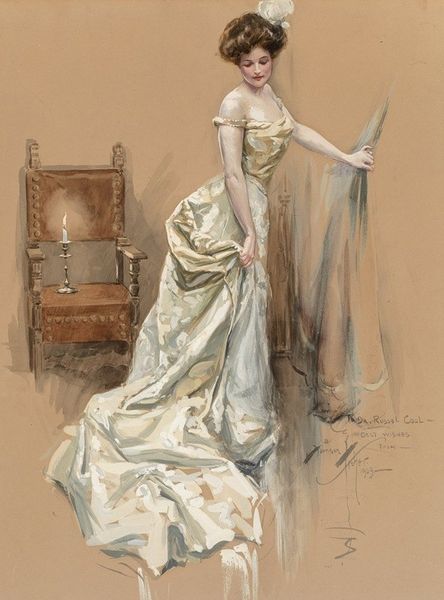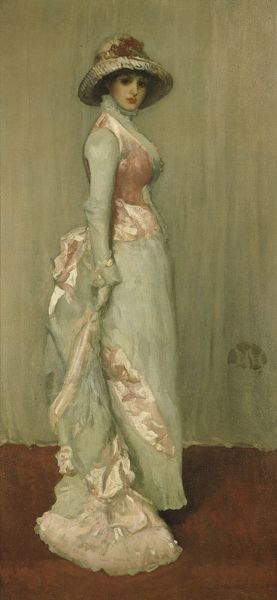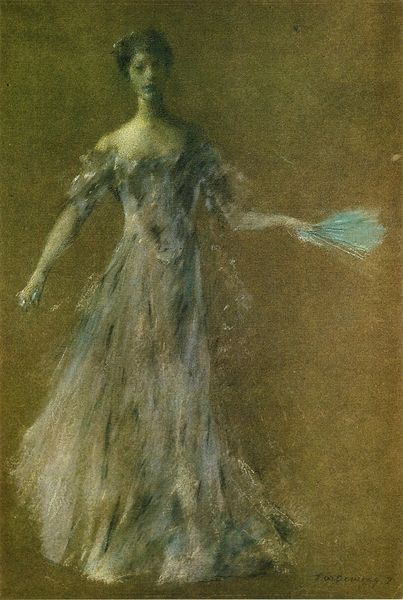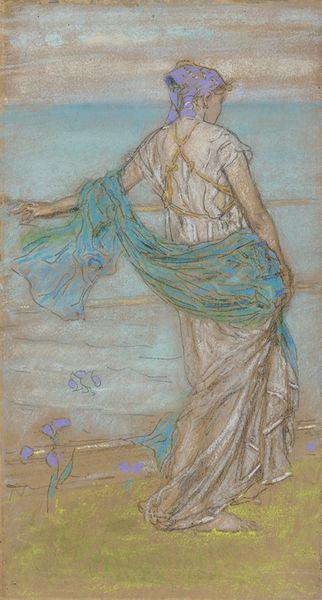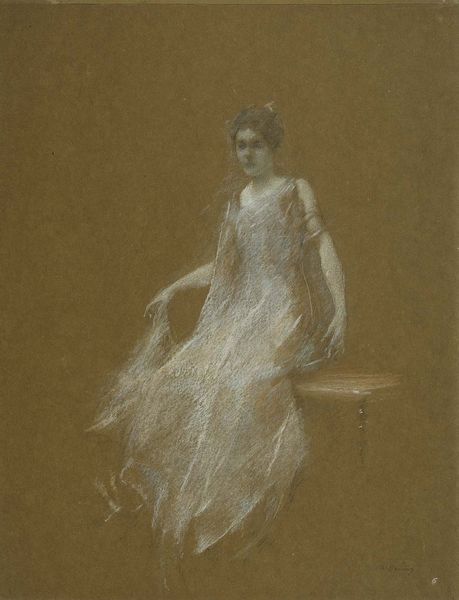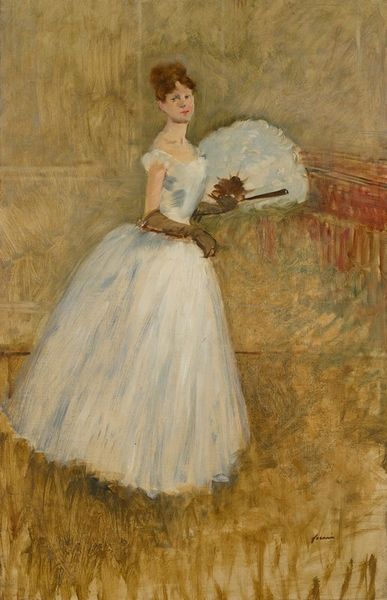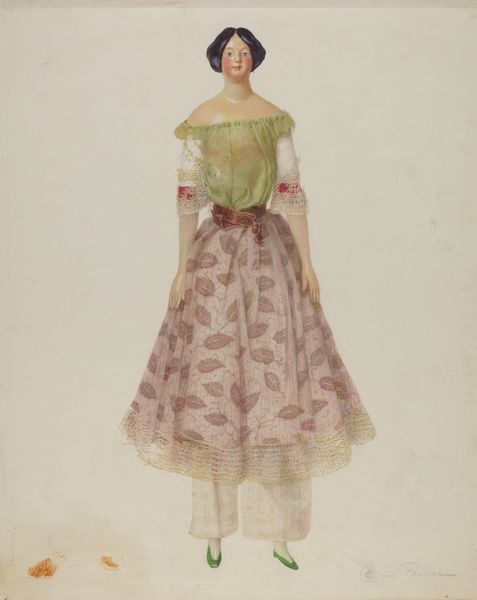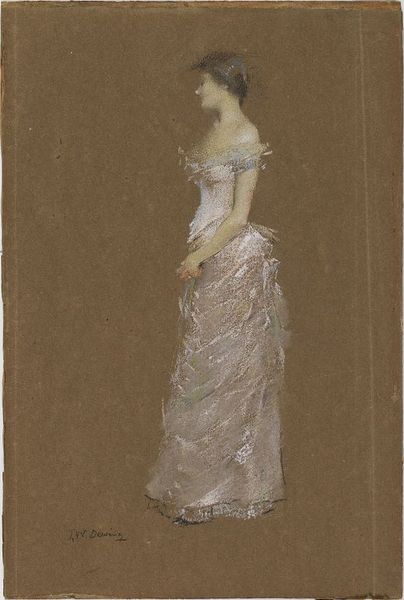
Copyright: Public domain
Editor: Okay, next up, we have Thomas Wilmer Dewing’s “Lady in Blue, Portrait of Annie Lazarus,” from 1890, rendered in pastel and gouache. There's a dreaminess to this piece. She seems almost ethereal. What do you see in this portrait? Curator: Oh, ethereal is spot-on! It’s like Dewing has captured a whisper of a memory, hasn’t he? The lady in blue appears almost translucent against that warm, grounding backdrop. It feels so tender. And have you noticed how her gaze drifts slightly upward? As if she’s listening to something only she can hear. Editor: Yes, it's like we're intruding on a private moment. Curator: Exactly. And that blue dress…it’s not just blue, is it? There are hints of green and violet swirling through it, like the colors you find in twilight. I wonder, do you get a sense of her social standing? Is she performing, or preparing to attend an event? Editor: I didn't consider that, but she definitely has a refined aura. And her dress does look almost theatrical with that sheer fan she's holding! What kind of statement was Dewing trying to make at the time? Curator: Well, the late 19th century was a time when artists were looking inward. There was growing attention placed on psychological nuances in art, on mood and suggestion rather than blatant storytelling. Dewing, with his soft, blended strokes and a restrained palette, invites us into a realm of pure, poetic reverie. He beckons the viewer to complete her story, perhaps... So, what’s the prevailing note for you? Editor: Definitely that dreamlike quality and the intimacy of the moment he captured. Now I want to go find other works by him. Curator: Excellent! It is always rewarding to consider connections and nuances in artworks with diverse eyes.
Comments
No comments
Be the first to comment and join the conversation on the ultimate creative platform.
